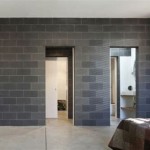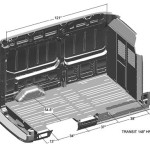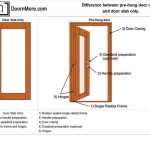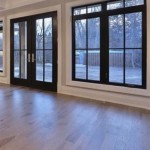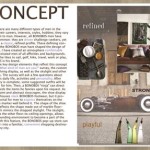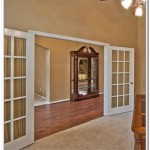Types of Interior Molding: A Comprehensive Guide
Interior molding, often referred to as trim, serves as both a decorative and functional element in interior design. It provides visual interest, conceals gaps and imperfections, and adds a layer of protection to walls and floors. Understanding the different types of interior molding available is crucial for achieving the desired aesthetic and functionality in any space. This article will provide a detailed overview of various types of interior molding, outlining their purpose, characteristics, and common applications.
Molding is typically made from various materials, including wood, medium-density fiberboard (MDF), polyurethane, and PVC. Each material offers unique benefits in terms of cost, durability, and workability. Wood is a classic choice, offering natural beauty and the ability to be stained or painted. MDF is a cost-effective alternative, providing a smooth, consistent surface ideal for painting. Polyurethane and PVC are moisture-resistant options suitable for bathrooms and kitchens.
Crown Molding
Crown molding is a decorative molding applied at the intersection of the wall and ceiling. It is designed to create a visual transition and add a touch of elegance to a room. Crown molding comes in a wide variety of profiles, ranging from simple, minimalist designs to ornate, classical styles. The size and complexity of the crown molding should be proportionate to the size and style of the room.
The primary function of crown molding is aesthetic. It can visually raise the ceiling height, creating a more spacious feel. It also helps to conceal any unevenness or imperfections at the wall-ceiling joint. Crown molding is available in various materials, including wood, MDF, polyurethane, and plaster. Wood crown molding offers a traditional look and can be stained to match existing woodwork. MDF crown molding is a more affordable option that provides a smooth surface for painting. Polyurethane crown molding is lightweight and moisture-resistant, making it suitable for damp areas.
Installation of crown molding requires precision and careful attention to detail. The corners must be mitered accurately to create a seamless joint. Proper support and fastening are essential to prevent sagging or separation over time. For complex profiles, professional installation may be recommended.
Baseboard Molding
Baseboard molding is applied along the bottom of the wall, where it meets the floor. Its purpose is to protect the wall from damage, conceal the gap between the wall and floor, and add a finished look to the room. Baseboard molding is available in a variety of heights, thicknesses, and profiles, allowing for customization to match the style of the room.
Beyond its protective function, baseboard molding contributes significantly to the overall aesthetic of the room. It can create a visual anchor and define the boundaries of the space. Simple, minimalist baseboard profiles are often used in modern interiors, while more elaborate, decorative profiles are common in traditional settings. The height of the baseboard should be proportionate to the ceiling height and room size.
Materials commonly used for baseboard molding include wood, MDF, and PVC. Wood baseboard offers a classic look and can be stained or painted to match other woodwork in the room. MDF baseboard is a cost-effective alternative that provides a smooth surface for painting. PVC baseboard is moisture-resistant and ideal for bathrooms, kitchens, and basements. Installation of baseboard molding involves attaching it to the wall using nails or screws. The corners are typically mitered to create a seamless transition between walls.
Chair Rail Molding
Chair rail molding is a horizontal molding applied to the wall at a height typically between 30 and 36 inches from the floor. Originally designed to protect the wall from damage caused by chairs, it now serves primarily as a decorative element, adding visual interest and breaking up large wall surfaces. Chair rail molding can be used to create a distinct separation between different wall treatments, such as paint and wallpaper.
The placement of chair rail molding can significantly impact the perceived proportions of a room. When placed lower on the wall, it can make the ceiling appear higher. Conversely, placing it higher can make the ceiling appear lower. The style of the chair rail should complement the overall design of the room. Simple, minimalist profiles are suitable for modern interiors, while more ornate profiles are appropriate for traditional settings.
Chair rail molding is typically made from wood, MDF, or polyurethane. Wood chair rail offers a classic look and can be stained or painted. MDF chair rail is a cost-effective option that provides a smooth surface for painting. Polyurethane chair rail is lightweight and easy to install. Installation involves attaching the chair rail to the wall using nails or screws. The corners can be mitered or coped, depending on the profile.
Picture Rail Molding
Picture rail molding is a decorative molding installed near the ceiling, designed to allow for the hanging of pictures without damaging the walls. This molding provides a convenient and flexible way to display artwork without the need for nails or screws. Picture rail molding is typically used in older homes but is also gaining popularity in modern interiors for its practicality and aesthetic appeal.
Picture rail molding typically features a groove or hook that allows for the attachment of picture hangers. These hangers use wires or cords to suspend the artwork from the rail. This system allows for easy rearrangement of pictures without leaving holes in the walls. The style of the picture rail molding should complement the overall design of the room, and it can be painted or stained to match existing trim.
Materials commonly used for picture rail molding include wood and MDF. Wood picture rail offers a traditional look and can be stained or painted. MDF picture rail is a cost-effective alternative that provides a smooth surface for painting. Installation involves attaching the picture rail to the wall near the ceiling using nails or screws. The corners are typically mitered to create a seamless transition between walls.
Door and Window Casing
Door and window casing is the molding that surrounds door and window frames. It serves to conceal the gap between the wall and the frame, as well as provide a decorative finish. Casing comes in a variety of styles, from simple and modern to ornate and traditional.
The primary function of casing is to create a clean, finished look around doors and windows. It also helps to insulate the opening and prevent drafts. The style of the casing should complement the overall design of the room. Simple, flat casing is often used in modern interiors, while more elaborate, profiled casing is common in traditional settings.
Materials commonly used for door and window casing include wood, MDF, and PVC. Wood casing offers a classic look and can be stained or painted. MDF casing is a cost-effective alternative that provides a smooth surface for painting. PVC casing is moisture-resistant and ideal for bathrooms and kitchens. Installation involves attaching the casing to the door or window frame and the surrounding wall using nails or screws. The corners are typically mitered to create a seamless transition.
Panel Molding
Panel molding is used to create decorative panels on walls, doors, and furniture. It adds visual interest and texture to otherwise plain surfaces. Panel molding can be used to create a variety of effects, from simple, geometric patterns to elaborate, classical designs.
Panel molding can be used to add architectural detail to a room and create a sense of depth and dimension. It can also be used to conceal imperfections in the wall surface. The style of the panel molding should complement the overall design of the room. Simple, rectangular panels are often used in modern interiors, while more ornate, curved panels are common in traditional settings.
Materials commonly used for panel molding include wood, MDF, and polyurethane. Wood panel molding offers a classic look and can be stained or painted. MDF panel molding is a cost-effective alternative that provides a smooth surface for painting. Polyurethane panel molding is lightweight and easy to install. Installation involves attaching the panel molding to the wall, door, or furniture using adhesive or nails. The corners are typically mitered to create a seamless transition.
Corner Guards
Corner guards are designed to protect wall corners from damage caused by impact. They are commonly used in high-traffic areas, such as hallways and stairwells. Corner guards are available in a variety of materials, including metal, plastic, and wood.
The primary function of corner guards is to prevent chipped paint, dents, and other damage to wall corners. They can also be used to conceal existing damage. The style of the corner guard should be functional and unobtrusive. Simple, minimalist designs are often preferred.
Materials commonly used for corner guards include metal, plastic, and wood. Metal corner guards are durable and long-lasting. Plastic corner guards are lightweight and easy to install. Wood corner guards can be stained or painted to match existing trim. Installation involves attaching the corner guard to the wall using adhesive or screws.
Wainscoting
Wainscoting refers to decorative paneling that covers the lower portion of a wall, typically up to chair rail height. It provides visual interest, protects the wall, and can enhance the architectural style of a room. Wainscoting can be created using various materials and designs, from simple beadboard to elaborate raised panels.
The primary function of wainscoting, originally, was to insulate a room and protect the walls from dampness. While its insulating properties are less relevant in modern homes, its decorative and protective qualities remain valued. Wainscoting can create a formal or informal look, depending on the style and materials used. It can also conceal imperfections in the lower portion of the wall and add a layer of durability.
Common materials for wainscoting include wood, MDF, and PVC. Wood wainscoting offers a classic and elegant look, ideal for traditional homes. MDF wainscoting is a more affordable option that can be easily painted. PVC wainscoting is water-resistant and suitable for bathrooms and kitchens. Installation involves attaching the wainscoting panels to the wall using adhesive, nails, or screws. The top edge is typically finished with a chair rail or cap molding for a clean and polished appearance.

The Best Builder Upgrades You May Not Have Considered

What Are The Diffe Types Of Moldings

Streamline Builders Finishes Up For A White Windsorone

Understanding Classic Moldings Part 1 Oldhouseguy Blog

Types Of Moulding The Home Depot

Types Of Molding And Why You Need Them Builders Surplus

5 Types Of Interior Trim Molding Remodeling Tips Dreammaker Bath Kitchen Ogden Ut

Interior Trim And Doors Henry Poor Lumber Company

Automotive Interior Trim Key Types And Materials For Vehicles

Blue Ox Millworks Custom Moldings Mouldings
Related Posts

